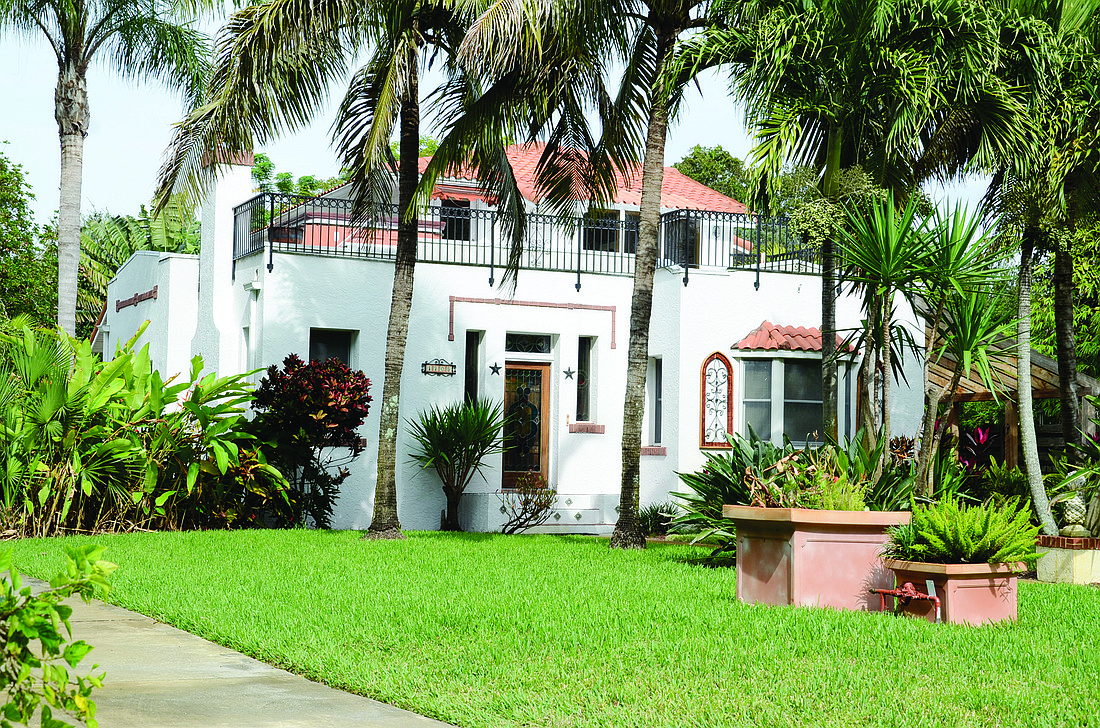- April 28, 2024
-
-
Loading

Loading

Tucked away from the thoroughfare of U.S. 41, brushing the border of Osprey, Vamo Drive would be missed except by those who know where to look.
The street is lined with homes, many built in the Spanish style, and slopes down directly into Sarasota Bay; the county-owned park at the end of the road has become a popular kayak launch.
From single, first-time homeowners to families to retirees, Vamo Drive holds a charm that draws a variety of residents.
Jane Reifert has lived in her Vamo Drive home for two years. Before, she had rented on Siesta Key. When she decided she wanted to buy a house, she told the Realtor to find her something different from everything else.
She was shown a house on Vamo Drive. Within 15 minutes of seeing it, she made an offer.
“It was love at first sight,” Reifert said.
The initial draw for her was the charm of the house, itself — the Spanish-style architecture, the unique quirks such as etched windows and tiled step risers —and the feeling of history on the street. The unique housing styles and the old oak trees that shade the sidewalks drew her in.
But she didn’t know exactly what she was buying into: a close-knit community made up of a diverse cross-section of residents.
Reifert decided to throw a house-warming party on Cinco de Mayo. To be polite, she invited all of the neighbors on the street, but she didn’t really expect anyone but her friends to come.
“I was shocked when every one of them came to say hello,” Reifert said.
Fellow neighbor Karen Feduccia has a similar story. She and her husband, Mike, stumbled across Vamo because of friends who lived in the area. They moved with their son, Andrew, to the street because of its convenient location to Andrew’s school at the time, Gulf Gate Elementary, and its proximity to the bay.
“I love historic homes — ones that have charm and character and trees in the yard,” Feduccia said.
Feduccia and her family were also quickly drawn into the community spirit that ties the street together. She and Reifert both mentioned the attentiveness of other neighbors — not nosy, they clarified, but friendly and caring.
“If I come home late at night after work, Karen will put away my trash cans for me,” Reifert said. If someone on the street needs something, they don’t hesitate to call and ask, she added.
Feduccia and Reifert, along with other neighbors, host parties, cookouts and holiday dinners for their neighbors; some of the women on the street will walk down to the water together at nights to watch the sunsets and catch up.
“We care — we watch out for each other,” Feduccia said. “The community is the best part about living here.”
But both neighbors pointed to one central anchor, the person who keeps them all together: Norma Martin.
Martin, 99, has lived on the street for 68 years — she’s Vamo’s longest resident. Feduccia and Reifert described her as the glue, the matriarch, the mayor of the street.
“She always introduces herself to new people on the street,” Feduccia said.
Martin believes in the neighborhood feeling, Reifert said, and is also the resident historian on all things Vamo. Martin has tried to pass that down to her neighbors.
“Norma is wonderful,” Reifert said.
Martin used to live in the biggest house at the end of the street, the former Vamo Lodge Hotel, with her husband, Jack. They later moved next door.
She’s collected photos and articles tracing Vamo’s history. She even has a newspaper clipping from 1925, when Vamo became its own municipality for one year.
Her passion for the street — and the people living on it — has transformed the community into something special, Reifert said.
“It would be hard to leave — we all know we’d never find this somewhere else,” Reifert said.
What’s in a name?
Is it Vah-mo or Vay-mo? Norma Martin, the resident expert on Vamo history, said that the founders of the community wanted it to be pronounced “Vah-mo,” but as Northerners moved into the area, the pronunciation changed to “Vay-mo.”